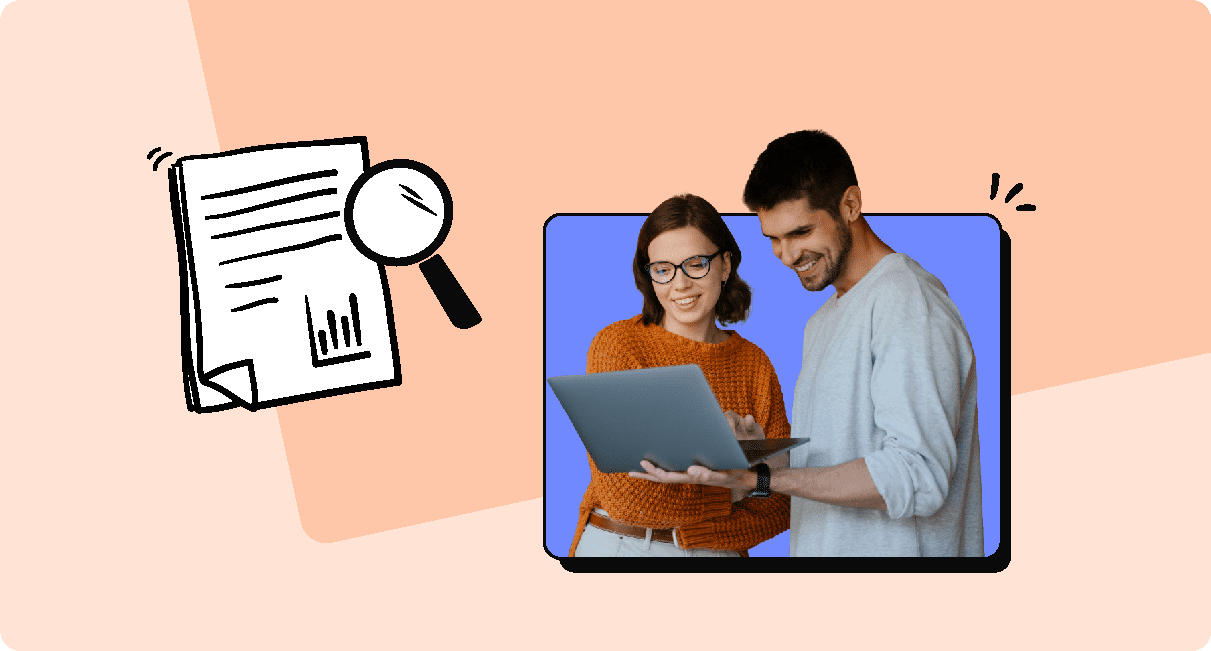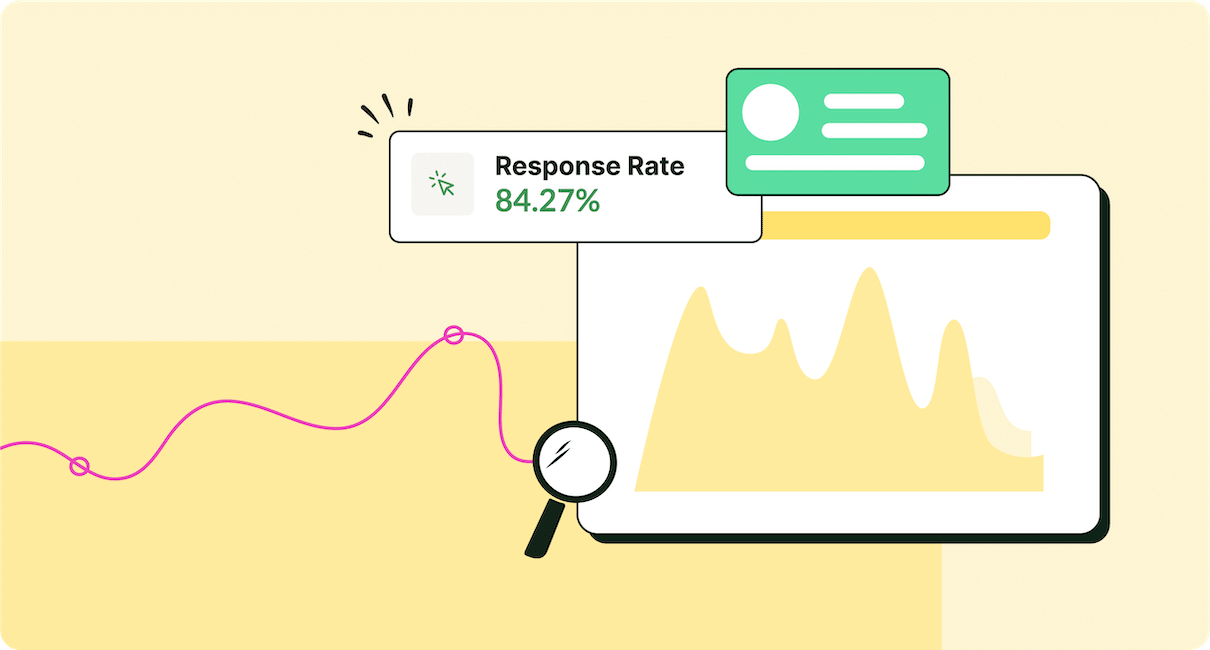It’s a truth universally acknowledged that happy employees are simply better to have by your side. Their energy and enthusiasm are infectious and they can make the dreariest workday a little brighter. But many are still baffled by how to measure employee happiness.
Teams made up of happy employees don’t just succeed, they thrive. So why aren’t more companies investing in employee happiness?
For starters, it may be that specific employee happiness metrics are hard to pin down. Not to mention, it can be mind-boggling to distinguish between employee happiness and employee engagement or satisfaction. But the biggest challenge of all seems to be the actual logistics of measuring workplace happiness.
Happiness is hardly a quantifiable phenomenon. But by understanding how employee happiness reveals itself in the workplace, you can learn how to measure ROI on employee engagement and prove its value to leadership.
Take a self-guided tour of ContactMonkey
See how our key features can streamline your internal communications.
Take product tour

What is Employee Happiness?
Employee happiness is at the intersection of employee engagement and satisfaction. It’s the quality of employee experience that goes a step further than employee satisfaction and is one of the building blocks of employee engagement.
Let’s dive deeper:
Employee happiness vs. employee satisfaction
Satisfied employees are fulfilled in their roles and have few complaints. But they might still explore other opportunities if presented with the option.
Employee happiness vs. employee engagement
Engaged employees are personally invested in the company’s success. They regularly go the extra mile in their tasks and their loyalty to the business is high. Employee happiness is necessary to reach this milestone.
While employee satisfaction, engagement, and happiness all work hand in hand, they should be considered as different stages of the employee experience.
Why is it Important to Measure Employee Happiness?
7 ways to get honest feedback from employee surveys
Will your workforce tell the truth? Foster trust and openness with your employee using these tips.
Download tips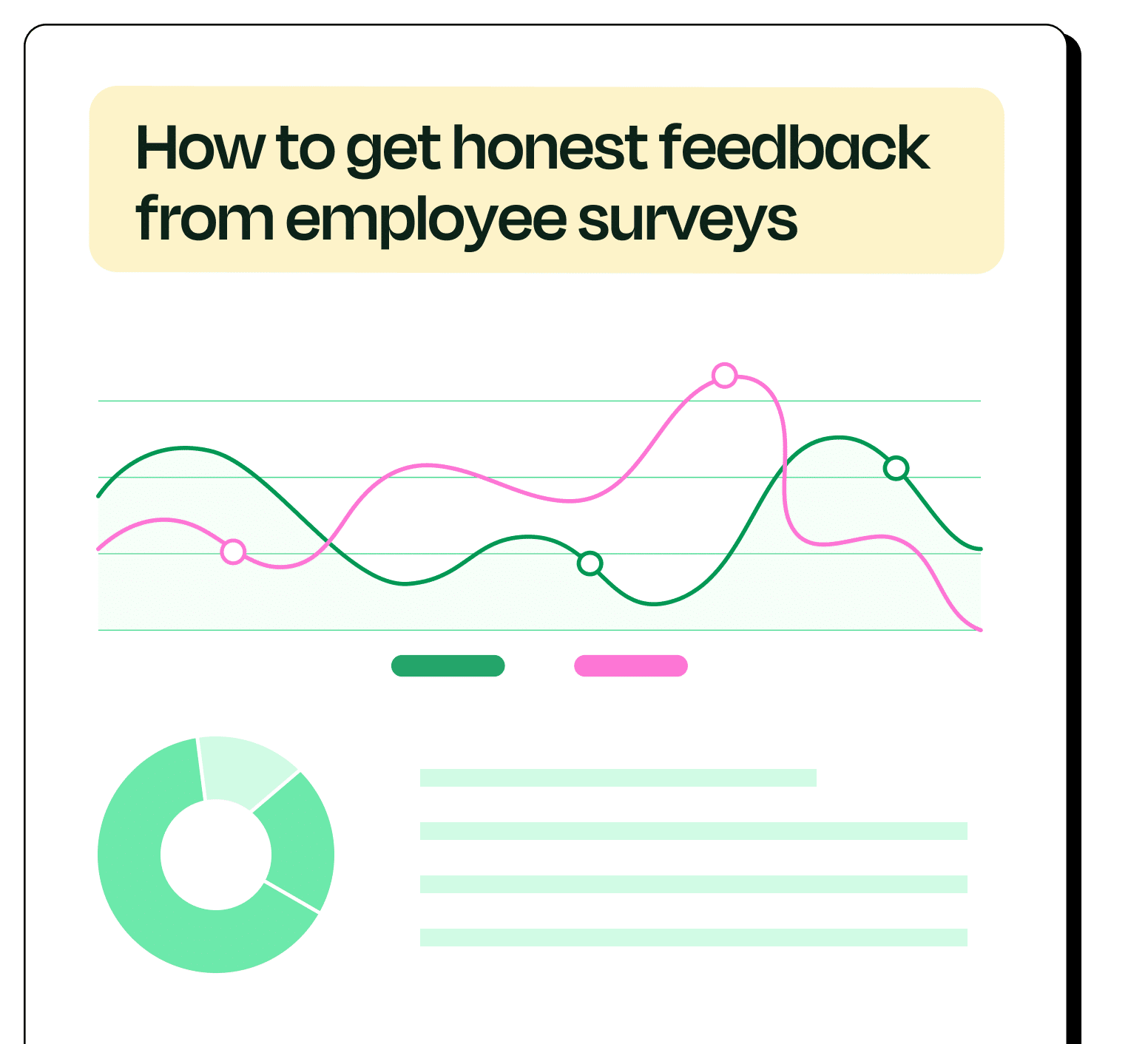
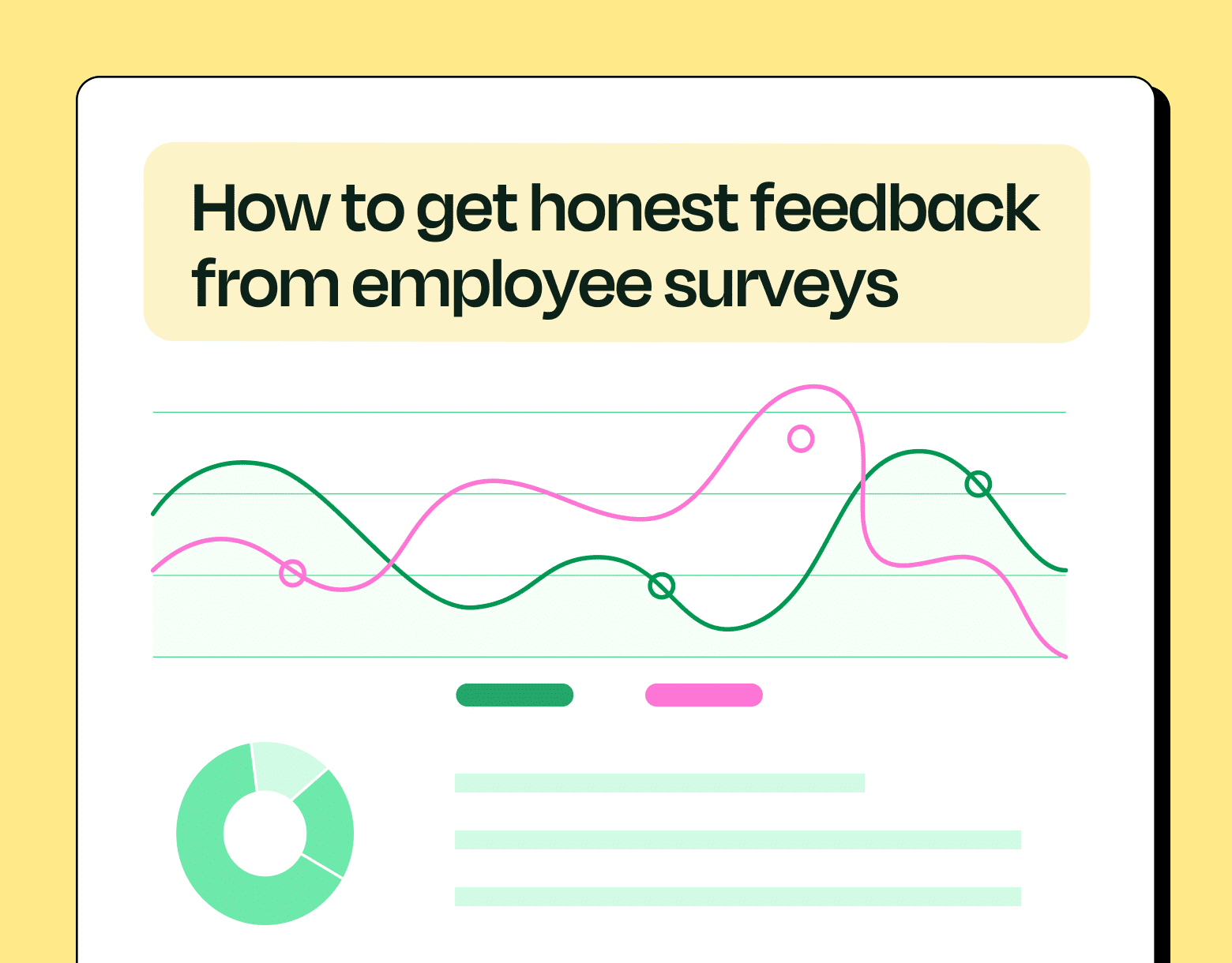
It’s important to measure employee engagement in order to see where your workplace happiness stands at present, identify patterns, and learn how to make improvements.
Without measuring employee happiness, it will be hard to reap its benefits. And there are many.
Here are just a few ways that employee happiness can boost your business success:
- Greater employee retention
- Improved productivity
- Stronger company culture
- Increased customer satisfaction
How to Measure Employee Happiness: 10 Essential Strategies
And now for the part we’ve all been waiting for— how to measure employee happiness.
Truth be told, measuring happiness at work can be challenging. But it’s critical that you keep up the effort.
Over time, you’ll understand which employee engagement trends and employee happiness indicators to look out for and the process will become more instinctual. Below, we’ve outlined our top techniques and tools to measure happiness at work.
Understand what drives engagement in your organization with these staff survey questions.
1. Conduct an employee happiness survey
When your company is trying to grow their revenue, they need to know how much they’re currently making, which departments are lagging, and how to secure growth.
Boosting employee happiness works similarly. You need to understand existing employee happiness levels by asking employees where they stand. Employee happiness pulse surveys let you do just that.
With ContactMonkey, gathering real-time employee happiness insights becomes easy through simple Likert scale surveys. We also swap the numbers for more dynamic response features like emojis, star ratings, and thumbs up/down.
Here are some employee happiness survey questions to ask:
- How would you rate your overall mood at the office [ emoji reactions ]
- Do you find your daily tasks fulfilling? [ yes/no ]
2. Have more authentic conversations
While surveys can give you straightforward feedback, a face-to-face conversation boasts added benefits. In particular, one-on-one meetings and performance reviews help to contextualize your employee survey responses.
For instance, you may tap into body language and tone, while gaining more in-depth details that can only emerge through face-to-face conversation.
We recommend holding these types of conversations regularly: every two weeks is optimal. Timing-wise, it will depend on your schedule and preference, but 30 minutes is usually a good place to start.
Step up two-way communication across your company with our employee feedback examples.
3. Take stock of employee initiatives and innovations
Employee innovation is an indirect indicator of employee happiness. That’s because happiness at work relies on employees doing new, unique, and fulfilling tasks that fuel their motivation.
If your employees are doing monotonous, routine work for most of their day, employee happiness is sure to stagnate.
On the other hand, more innovative employee engagement ideas on behalf of employees show that they’re inspired in their work and feel comfortable enough to share ideas. These are key requisites to employee happiness.
4. Offer anonymous employee feedback opportunities
Honest and authentic employee feedback is absolutely necessary for making solid improvements to employee happiness. Apart from using effective employee opinion survey questions, getting employees to open up to senior leaders is not an easy task.
Anonymous comment boxes help bridge the need for honest feedback and the ability to make employees feel comfortable sharing.
With ContactMonkey, you can embed anonymous feedback boxes right into your email newsletters. Learn how to create a successful employee newsletter with our complete guide.
Employees can feel confident knowing that their anonymity is guaranteed and provide more authentic feedback.
5. Check up on your customer metrics
When combined with other employee happiness indicators, customer insights can serve as a good signal of employee happiness.
We already know that happy, engaged employees deliver better customer service. To measure employee happiness, work backwards and examine customer satisfaction feedback.
If it’s at an all-time low, it’s unlikely that employee happiness will be high across your organization, and vice-versa.
Customer metrics can be gathered from customer experience surveys or Net Promoter Score (NPS), which check how many of your customers are your brand promoters.
Start two-way conversations and employee feedback loops
Learn how to engage staff with pulse surveys, content ratings and reactions, custom polls, and more. Ready to send modern emails?
See engagement features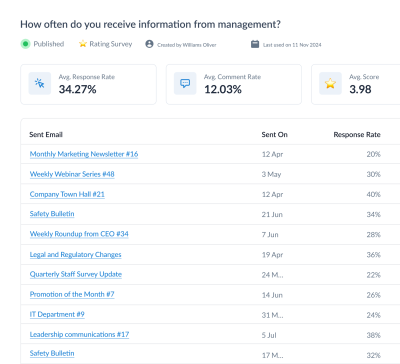
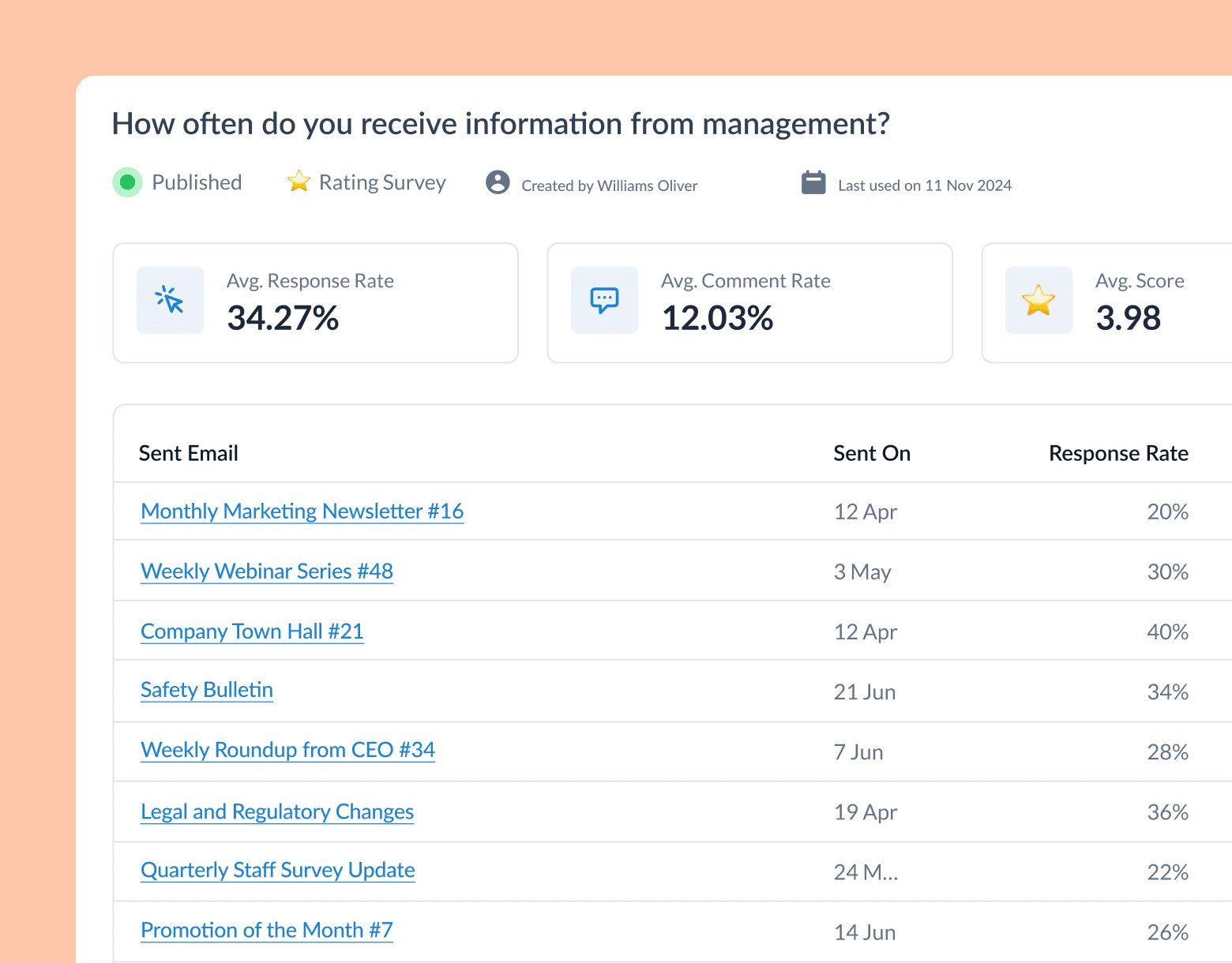
6. Examine employee performance
Employee happiness and performance work hand in hand. When your employees are happy, they regularly go above and beyond in their tasks.
Just as they deliver exceptional customer service, they create better products, pay more attention to detail, and simply do better. To recognize issues in employee performance, start taking stock of things such as:
- Employee productivity
- Product quality and errors
- Workplace safety incidents
- Customer feedback
7. Check employee wellness levels
It’s no secret that employee stress is synonymous with unhappy employees. If you’re not investing in employee wellness, you’ll be reaping the repercussions when it comes to employee happiness levels.
Your staff needs to have resources at their disposal to care for their wellbeing. If you’re not sure whether or not this is the case, conduct an employee wellness survey and have your staff self-evaluate their state of wellbeing.
Ask employees to rate statements such as:
- I feel that my management team supports my health and wellbeing
- I rarely feel very stressed at work
- There are resources available for me to ensure my wellbeing in the workplace
With ContactMonkey, you can easily solicit employee ratings using dynamic Likert scales such as emoji reactions and stars. Surveys can be embedded in seconds using a drag-and-drop style menu with dozens of additional features such as anonymous comments and eNPS (more about that next!). Employee feedback is a terrific way to contextualize your workplace engagement statistics.
8. Conduct an eNPs survey
Happy employees are your brand’s biggest promoters. With an Employee Net Promoter Score (eNPS) survey, you can gauge employee happiness by finding out how many of your employees would recommend your workplace to others.
What is eNPS? It’s a metric that calculates the number of staff that would promote your company to friends and family. It uses a simple question such as the one below, and allows employees to respond using a rating scale from 1 to 10.
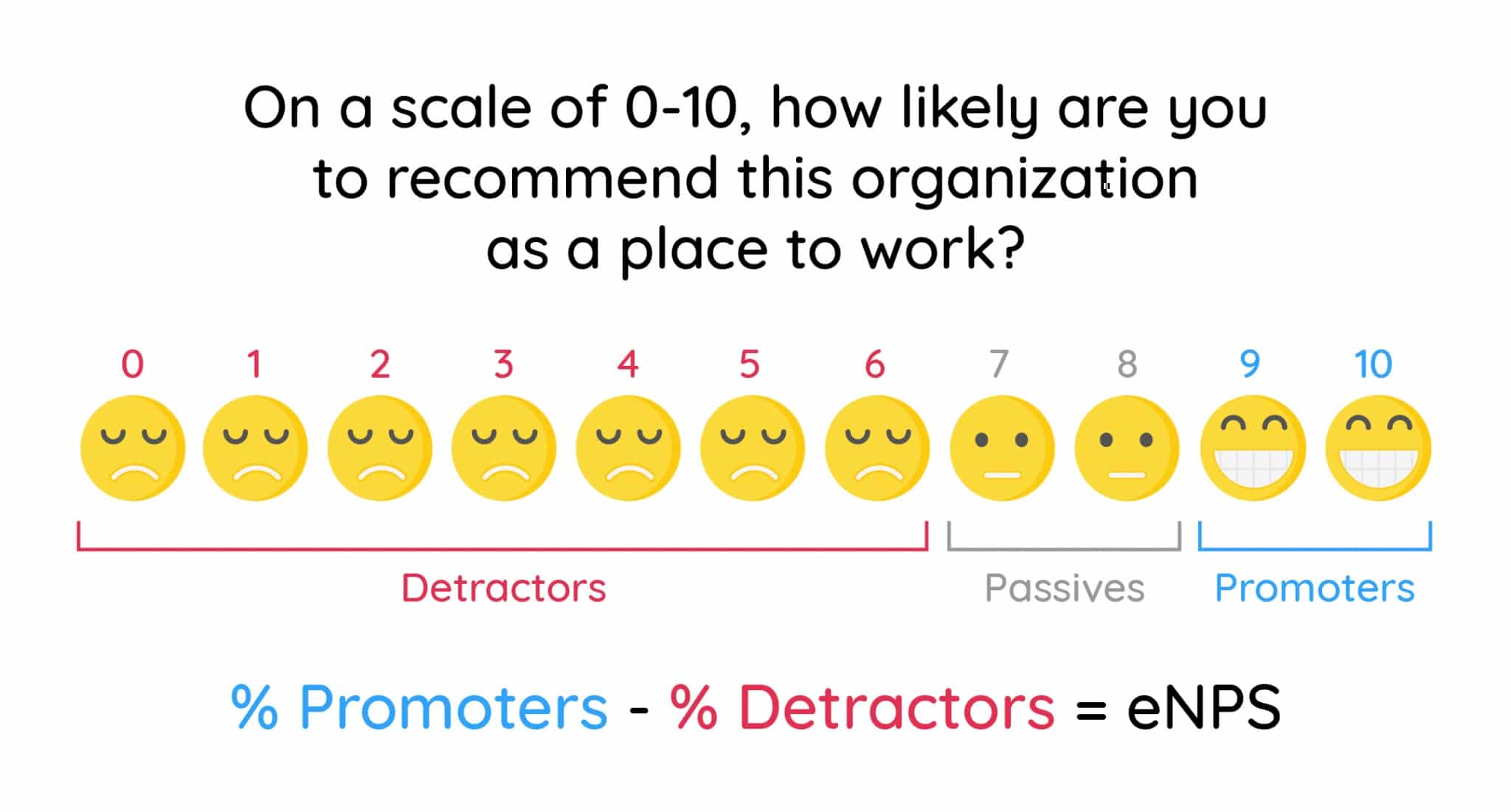
From your employees’ answers, you’ll learn how many are promoters, passives, and detractors. And with ContactMonkey, you can embed your eNPS survey into your employee emails and send it out straight from Outlook or Gmail.
9. Take a look at employee absenteeism
Considered on its own, absenteeism can be an indicator of many things. But if absenteeism becomes consistent it can certainly say a lot about employee happiness.
High absenteeism may indicate an employee who is burnt out and/or no longer motivated in their work. Adjustments to work-life balance can provide a robust solution, but you’ll have to get to the core of the problem first.
Conducting an employee motivation survey will help you get a better grasp on the issue at hand.
Using ContactMonkey, you can quickly and easily embed employee motivation survey questions right into your internal emails.
10. Consider your employee turnover rate
A lack of motivation among employees may start off as a spike in absenteeism but may easily escalate to soaring employee turnover if not addressed. It will also be tough to recruit top talent when your existing team members are hurrying out.
Happy employees experience greater workplace satisfaction and are more inspired and driven in their roles. As a result, their company loyalty is pretty high.
The opposite is true for unhappy employees. Unsurprisingly, employee unhappiness is directly linked to lower employee retention. If you want to stabilize employee turnover long-term, start investing in employee happiness ASAP. We’ll cover how to do this below.


How to Improve Employee Happiness
Improving employee happiness is not an overnight project. It requires grit, dedication, and consistency. By staying proactive rather than reactive, and having a solid strategy at hand, you can improve employee happiness in the long run.
Here are some employee happiness tips and strategies for improvement.
Keep measuring
The key to improving employee happiness is staying proactive. By monitoring and measuring job satisfaction indicators, you can stay on top of how employees are feeling and make improvements before issues get out of hand.
With ContactMonkey, you’ll be able to check on many of your employee happiness analytics — like eNPS and employee motivation — straight from your employee newsletter using pulse surveys:
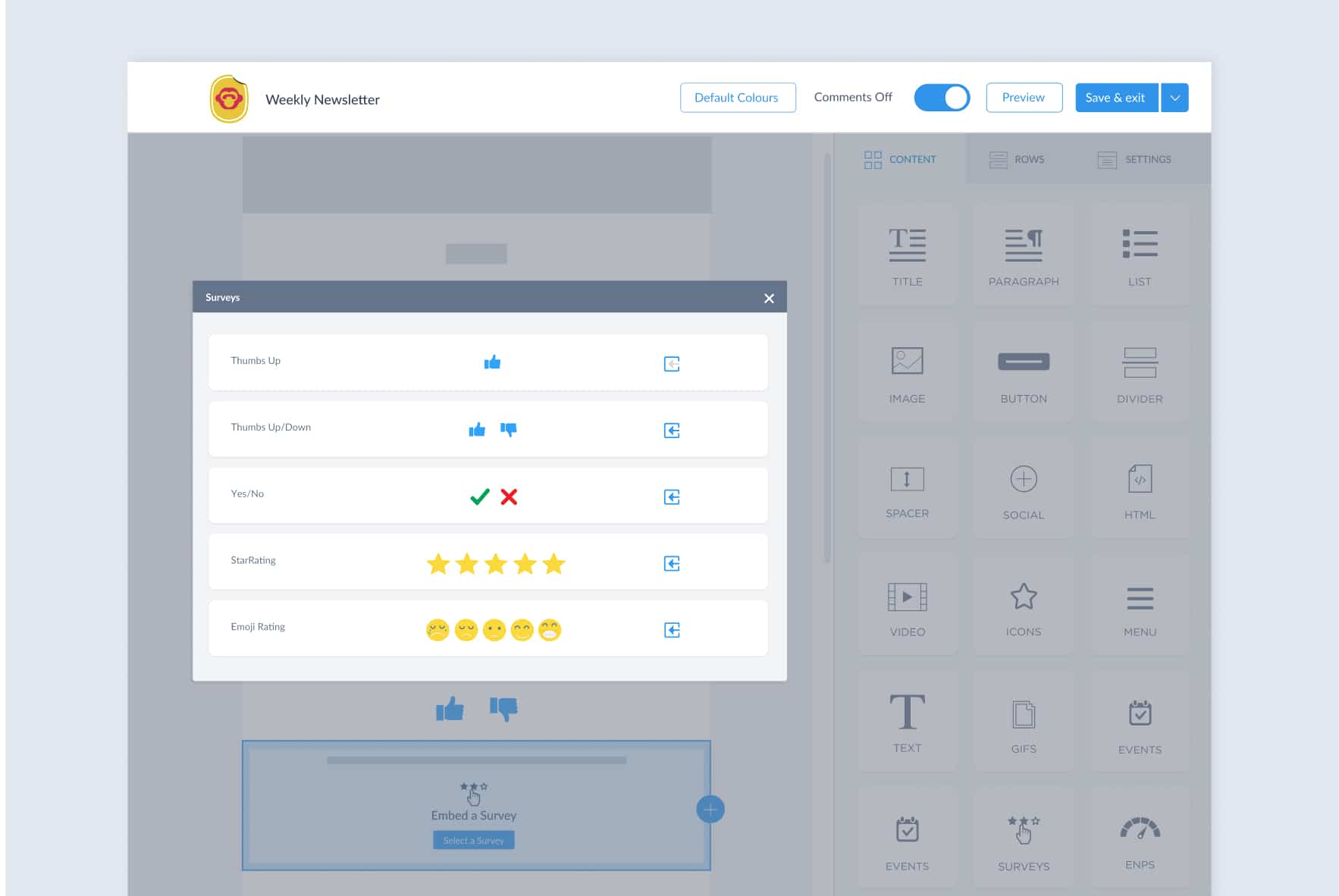
Learn how to create a pulse survey with our easy and intuitive guide.
Set up virtual team-building events
The truth of the matter is, we spend most of our week at work. If our workplace relationships are unfulfilling, the workday can be a dread.
Virtual team-building activities help remote and hybrid employees build stronger teams by engaging in more meaningful interactions and conversations. Check out our blog on virtual team-building activities for 20+ ideas for your next virtual get-together.
Make work-life balance the focus
Overworked employees are much more likely to become withdrawn, unmotivated, and burnt out. Needless to say, improving work-life balance is a good way to start boosting employee happiness.
By conducting an anonymous workplace wellness survey, you’ll get insights into how employees are truly feeling about their workload, wellbeing, and the like.
Guaranteed anonymity will offer more quality information and you can use it to determine if you need to start implementing more workplace wellness initiatives or offering additional benefits like fitness coverage or therapy.
Show employee recognition
Compensation and benefits are important, but showing employees how much their efforts are valued through words and acts of gratitude is what truly boosts employees’ morale.
To improve employee happiness, think about creative ways of giving positive employee feedback. Sending thank you notes, adding an employee of the month feature in your internal newsletter, or ordering a personalized gift set are all good strategies to drive employee engagement through internal communications.
The little things can make a big difference.
Check out our blog post on employee recognition ideas for some fresh inspiration.
Be truly prepared to listen and make changes
This is a big one. If you’re failing to act on the data you gather with an employee feedback platform, why would employees want to put in the time to continue sharing? They’ll feel rightfully discouraged about the level of care from management and may start considering their next move (outside your company).
Show employees that management is listening by addressing any concerns expressed in their feedback within your leadership communication. Then, highlight your intended steps for enacting change.
If you need help getting started, you can try our new OpenAI integration to help you generate some engaging content that could resonate with your team.
Measure and Optimize Employee Happiness With ContactMonkey
We’ll admit it: employee happiness can be hard to pin down. But successful employers understand the value of measuring employee happiness. By thinking creatively about the sources of employee happiness – workplace relationships, employee recognition, etc. – you can start measuring employee happiness at its roots.
ContactMonkey makes measuring employee happiness a little easier. By tapping into the key sources of employee happiness through pulse surveys, our software lets you keep track of workplace happiness levels. You’ll also show your staff that you put their job satisfaction first.

